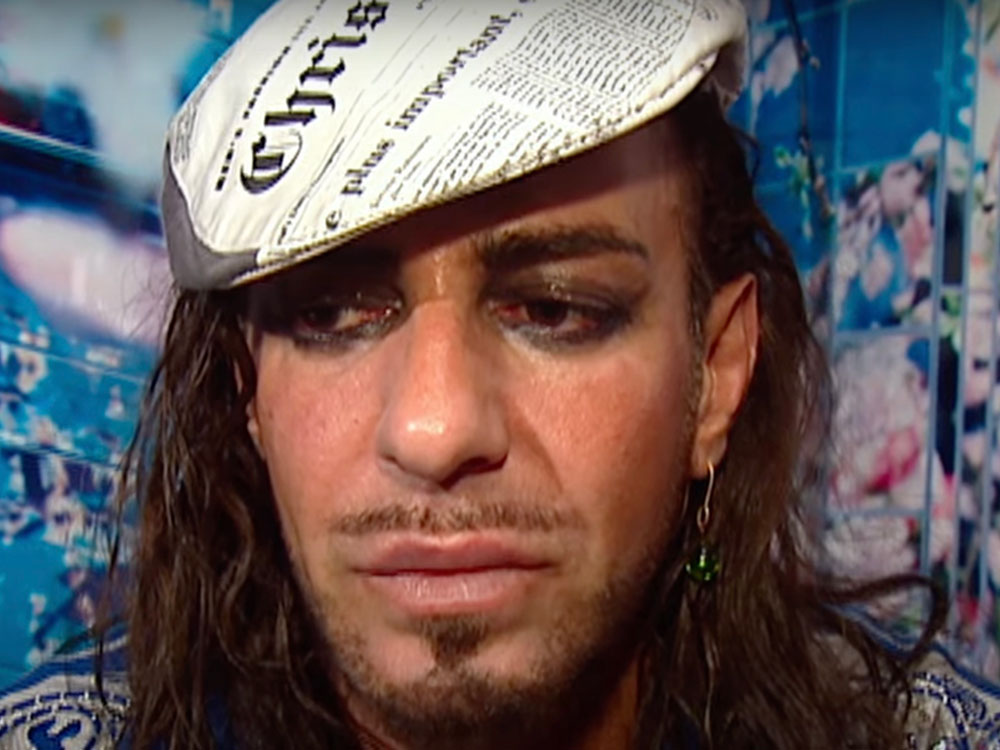On a dark evening in February 2011, the British fashion designer John Galliano verbally assaulted another couple at La Perle Bar in Paris. Galliano, who was soddenly drunk at the time, described another couple as ugly, stated his admiration for Hitler and issued a torrent of antisemitic statements.
These events, captured on video, went immediately viral. Galliano lost his job as the artistic director of the famed French fashion house Christian Dior and became a pariah in the glittering circles where he was once centre stage.
It was a precipitous fall from grace informed in part by Galliano’s vertiginous rise as one of the most influential fashion icons of his generation. A new documentary entitled High & Low: John Galliano covers it all.
Before he became the driving force of Dior as well as his own eponymous fashion line, Galliano was a scrawny little kid growing up in South London. The young Galliano’s staunchly Catholic family didn’t appreciate how the lad flouted the rules of gender and propriety.
In an especially telling sequence, Galliano recounts being beaten by both his parents when he expressed his nascent sexuality by remarking that another man looked gorgeous.
After being accepted at Central St. Martins university, the man found his people: queer, riotous art school students, musicians and models who made the ’80s a veritable explosion of creativity and excess.
Les Incroyables, Galliano’s legendary student show based on the French Revolution, cemented his reputation as a brilliant troublemaker. Even many decades later, the chin-dropping experience of seeing the designer’s debut still leaves the people interviewed in the film gasping and grasping for adequate superlatives.
With little money but talent overflowing, Galliano moved to Paris, the fashion capital of the world. He was determined to make a name for himself. Which is exactly what he did.
After a series of remarkable shows, often made with little money, donated venues and supermodels working for free, the fashion establishment sent a long, dark limousine to shepherd the young designer to the offices of Bernard Arnault, the head of fashion conglomerate LVMV. Arnault was the richest person in the world, with an estimated worth of $229 billion.
Arnault initially offered Galliano the role of creative director at Givenchy, before moving him even further up the line to the flagship of Dior. It’s there that the designer truly took aim at the stratosphere, blasting off like a rocket ship. He was fuelled largely in part by booze, drugs and fashion itself — perhaps the powerful substance of them all.
Everything you might ever want to know about Galliano is covered in the doc, but it’s the fashion world itself that warrants a closer look. Despite the presence of Condé Nast Entertainment as a producer on the film and to the credit of director Kevin McDonald, this isn’t a puff piece. But neither is High & Low a warts-and-all takedown.
Despite Galliano’s despicable behaviour, the ruffled effervescence of his creations proves almost impossible to resist. I speak for myself as much as the film.
Undone by dedication
Nothing was quite as heady as the ’80s and ’90s fashion world, fuelled by money, hedonism, sex and a whole lot of supermodels. In addition to Naomi Campbell, Kate Moss, Charlize Theron and a revolving coterie of glamazons, the documentary also features the powers behind Galliano’s ascendance including Vogue editor Anna (oft-called “Nuclear”) Wintour and Arnault, the money man behind the glitz.
In directing the documentary, Macdonald amassed a treasure trove of images and interviews to choose from. It is hard to not be seduced by the ravishing beauty that Galliano was capable of mustering.
Occasionally it is a bit too on the nose. Intercut throughout the narrative is footage from director Abel Gance’s silent epic Napoleon. If the intent is to frame Galliano’s reign as fashion emperor, I suppose it works, but the grandiosity in extremis edges into cartoon territory. In this way, the film is almost undone by its own dedication to the legend of Galliano himself.
The stories are legion. We walk through the designer’s habit of serially trashing expensive hotel suites. And the time he commandeered the elevator at the Ritz Hotel in London. There, he stripped down to nothing, declared himself a lion and spent a few hours growling and clawing at anyone who tried to use the lift.
Even as Galliano was melting down, another British designer, Alexander McQueen, was also breaking under similar pressure. The two men were contemporaries, attending the same school and scaling the heights of the fashion world.
As Galliano describes the similar workload that they both shared in their respective careers — a dizzying number of collections from haute couture to subsidiary collections of jewelry, shoes, ready-to-wear — it’s hard to conceive of any human managing that amount of work and not imploding. McQueen died by suicide at the age of 40.
The relentless pace of work continued, even as it was becoming increasingly apparent that Galliano was not functioning well.
On the day of his father’s death, the designer was back at work a few hours after burying his parent. But it was the death of Steven Robinson, Galliano’s right-hand man and arguably secret weapon in managing his many commitments that plunged the designer into an irretrievable tailspin of drinking and depression.
In addition to prodigious amounts of alcohol, uppers, downers and sleeping pills were also in heavy use. As Galliano explains in the film, “I was committing suicide slowly.”
From there, it was only a matter of time before a full flaming implosion at the La Perle bar in Paris.
Complexity, but little accountability
So, what does the man at the centre of all this drama have to say? Even as he is facing the camera, alternately explaining his behaviour and the root trauma that arguably drove his fall from grace, there are large gaps in the story.
Whether periods of blackout drinking erased clear memory of what took place, or Galliano simply doesn’t want to admit to some of the worst moments, he presents as an unreliable narrator. The people he so publicly abused state that he never truly apologized for his outburst, and many colleagues and friends state the same.
Washington Post writer Robin Givhan dryly notes that Galliano’s cancellation didn’t last long. He is a well-connected white man, and his abilities as a designer had arguably made his corporate bosses an absolute fortune.
After a period of rehabilitation in Arizona (of all places), another kind of re-establishment ensued as the celebrities and powerful people who had partied, celebrated and supported Galliano’s excessive ways gathered round.
The designer was offered other, albeit less showy positions in the fashion world. Stints at Oscar de la Renta and Maison Margiela followed his departure from Dior.
The idea that fashion eats itself may be the biggest takeaway from the film. But even those folk who don’t care a whit about the difference between Dior and Chanel might be enticed by how Galliano’s career paralleled fashion turning from a niche industry into a monster of money, influence and power.
Pull back the allure of couture, and what we see is rapacious capitalism and the gaping, devouring maw of profit. Pour in all the talent and beauty in the world: it simply wants more. ’Tis Faustian for sure.
It’s hard not to feel that the pursuit of profit above all else is the true villain in the saga. Galliano might be a troubled person in multiple ways, but he is also something of a victim.
Is there any bigger lesson other than money ruins everything? Maybe not. But it’s a story that is as classic as a little black dress.
‘High & Low: John Galliano’ is screening at the VIFF Theatre in Vancouver until March 28. ![]()
Read more: Labour + Industry, Gender + Sexuality, Media, Film

















Tyee Commenting Guidelines
Comments that violate guidelines risk being deleted, and violations may result in a temporary or permanent user ban. Maintain the spirit of good conversation to stay in the discussion and be patient with moderators. Comments are reviewed regularly but not in real time.
Do:
Do not: